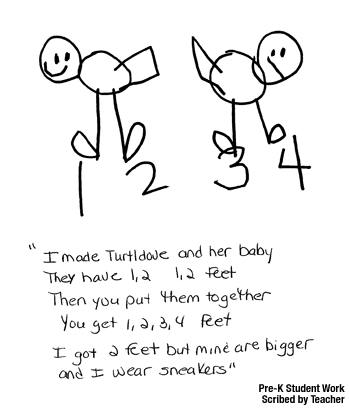Student Communication
Communication is fundamental. It is not only the vehicle by which we convey our thinking to others, but it is the way in which we process information. As we organize our thoughts to communicate, we learn content. Understanding how to communicate that content must be considered a basic skill in our schools today.
Communicating in math and science is not only critical, but it also gives students the opportunities to apply their communication skills in diverse content areas. In this section of our website, we have collected material that will help teachers enhance their students' communication skills.
Math
Science
From the beginning, Exemplars science rubrics have included criteria focused on communication. Students' work must concentrate on communication, or it will not meet the (Exemplars) standard. Learn more »
National Communication Standards
The authors of the national mathematics and science standards recognize the importance of communication, and have included it as a standard to be met. Exemplars has also included these relevant communication standards in our math and science rubrics.
Communication Criteria in Exemplars Rubrics
From the beginning, Exemplars math and science rubrics have included criteria focused on communication. Students' work must concentrate on communication, or it will not meet the (Exemplars) standard. Below are the relevant communication performance standards at the Exemplars Practitioner Level.
Elements from the Math Rubric
- Reasoning and Proof
- Arguments are constructed with adequate mathematical basis
- Communication
- A sense of audience or purpose is communicated
- ...a methodically organized, coherent, sequenced and labeled response
- Formal math language is used throughout the solution to share and clarify ideas
- Representation
- Appropriate and accurate mathematical representation
Elements from the Science Rubric
- Scientific Communications/Using Data
- A clear explanation was presented
- Effectively used scientific representations and notations
- Scientific Concepts and Related Content
- Appropriately used scientific terminology
- Provided evidence of understanding to relevant scientific concepts, principles or theories (big ideas)
- Evidence of understanding observable characteristics and properties of objects, organisms and/or materials used


